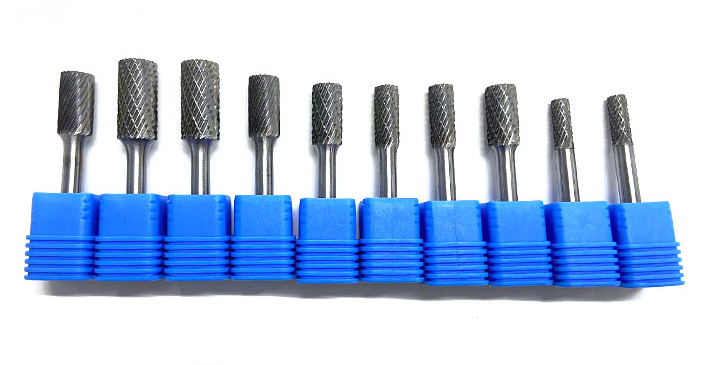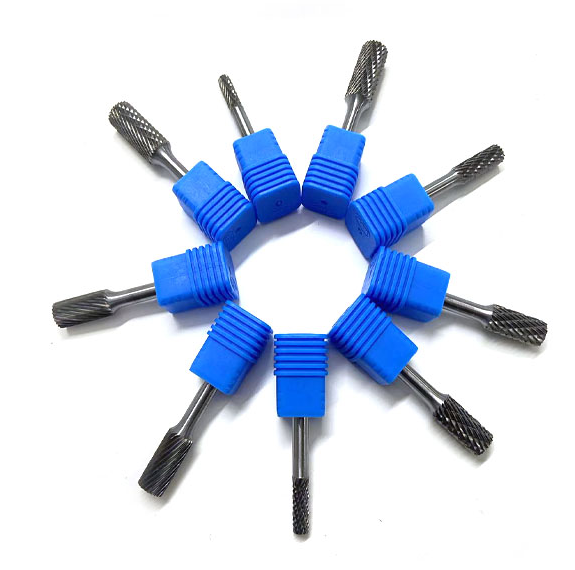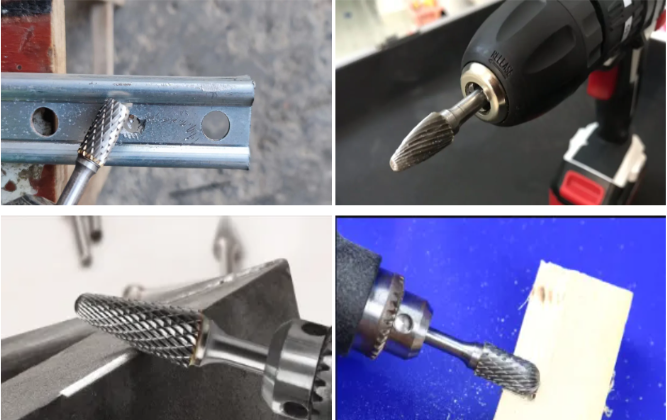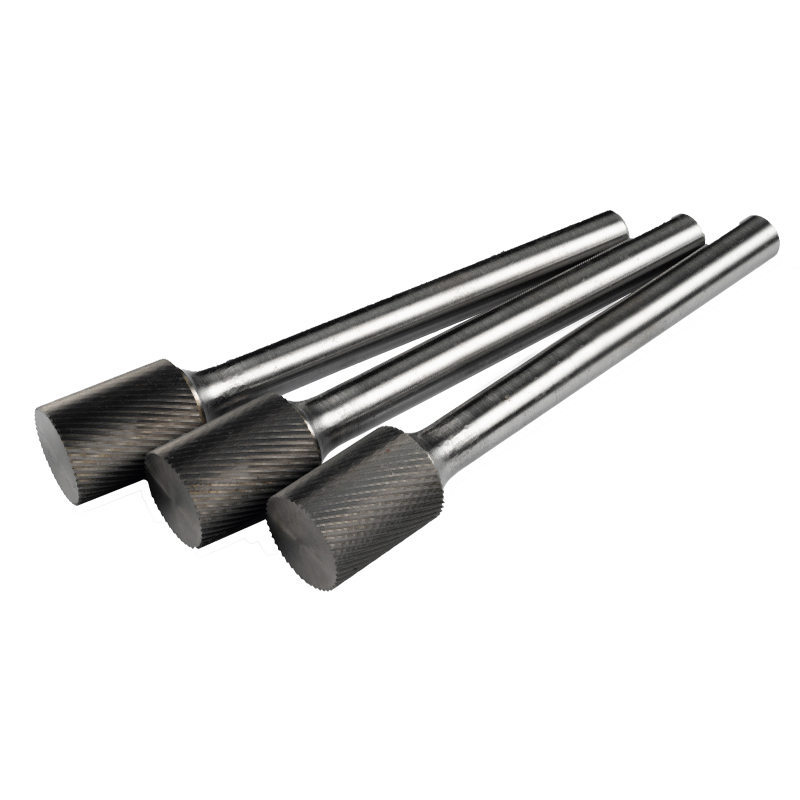23
2025
-
05
Tungsten Carbide Rotary Burrs: Model Breakdown, Selection Guide, and Core Applications
Tungsten Carbide Rotary Burrs: Model Breakdown, Selection Guide, and Core Applications
Tungsten carbide rotary burrs are high-efficiency cutting tools used extensively in metalworking. Known for their hardness, wear resistance, and versatility, these tools are widely applied in mold making, automotive, aerospace, and mechanical maintenance industries. This article introduces the basic types of rotary burrs, provides practical selection guidance, and outlines their key application fields.

Understanding Rotary Burr Models
Carbide rotary burrs come in various shapes and tooth configurations. The model code typically reflects the head shape, cutting tooth type, and shank diameter.
Common Head Shapes:
Type A (Cylindrical): Ideal for surface leveling and internal right-angle finishing.

Type C (Ball-shaped): Suited for groove smoothing and concave surface profiling.

Type D (Ball-nose Cylinder): Great for welding seam finishing and curved surfaces.

Type F (Oval): Designed for complex contours and curved profiles.

Type G (Flame-shaped): Perfect for mold cavities and tight corners.

Type L (Taper with Rounded End): Ideal for deep hole and tapered bore finishing.

Tooth Patterns:
Single Cut: For ferrous metals such as steel and stainless steel, offering fast material removal and a smoother finish.
Double Cut: Cross-cut design reduces chip size and vibration; ideal for softer metals like aluminum, copper, and brass.
Aluminum Cut (Aluma Cut): Aggressive tooth spacing for soft materials—prevents clogging.
Coarse Cut: Used for rapid material removal in heavy-duty operations, such as slag or sprue removal.

2.Selection Guide
Select the appropriate tooth pattern:
Hard metals → Single cut
Soft metals & plastics → Double cut or aluminum cut
Heavy stock removal → Coarse cut
Machining Area and Shape
Choose the burr head shape based on the geometry of the area to be machined:
| Head Shape | Best Use |
| Cylindrical (A) | Flat surfaces, inside corners |
| Ball (C) | Concave surfaces, grooves |
| Ball-nose (D) | Seam removal, rounded corners |
| Oval (F) | Curved profiles |
| Flame (G) | Mold cavities |
| Tapered (L) | Deep holes, tapered areas |
3.Shank Diameter Compatibility
Common shank sizes are 3mm, 6mm, and 1/4 inch, which should match the collet of your tool (pneumatic grinder, rotary tool, etc.). Larger shanks offer more stability for heavy-duty tasks.
4.Application Needs
For rough machining: Use larger heads with coarse teeth.
For fine detail work: Use smaller heads with fine or double cuts.
5.Core Application
Tungsten carbide rotary burrs serve a broad range of industries. Below are the most notable applications:
A、Mold Manufacturing
Cavity shaping, surface finishing, and weld repair.
Flame- and taper-shaped burrs are useful for tight internal contours and corners.
B、Mechanical Processing & Maintenance
Deburring, edge chamfering, weld seam cleanup, and mold gate removal.
Ideal for post-casting or post-welding treatment of metal parts.
C、Aerospace and Automotive Industries
Used in deburring and finishing of lightweight alloy parts.
Improves precision and safety of assembled components.
D、Metal Art & Craft Detailing
Excellent for stainless steel, brass, aluminum, and even some hardwoods.
Suitable for sculpting, engraving, and fine detailing.
E、Construction Hardware & Stainless Steel Fabrication
Seam smoothing on stainless steel fittings, pipes, and doors.
Can be used with angle grinders or rotary tools for on-site finishing.


Degişli habarlar
Zhuzhou Chuangde sementli karbid ş
Goş215, 1-nji bina, Halkara talyplar pioner seýilgähi, Taýwan ýoly, Tianyuan etraby, Zhuzhou şäheri
Iberiň
Awtorlyk hukugy :Zhuzhou Chuangde sementli karbid ş
Sitemap
XML
Privacy policy
















